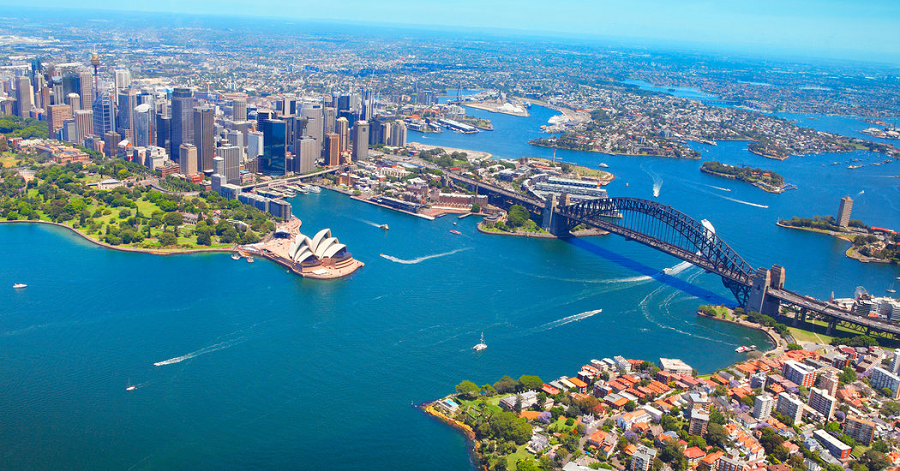
Australia is home to thousands of different flora and faunaspecies, which includes more than 300 native mammals and over 800 birds. Truly mind-blowing, compared to other parts of the world. That makes the country one of the globe’s most precious and one that is vitally important to protect. But just how is Australia faring in terms of its sustainability efforts?
It may surprise you to find out, that recent research has uncovered that none of Australia’s cities managed to break into the top 30 most sustainable cities in the world. Digging in the findings further, Sydney and Canberra ranked 34 and 35, respectively.
By the year 2050, Australia’s capital Sydney is aiming to achieve net zero carbon buildings. This mirrors a bid made by 100 other cities from across the world. In the piece below, we’ll take a deeper look at sustainability in Australia. Read on to find out more.
The main methods of measuring sustainability
Many of us would be quick to skim over the actual meaning of sustainability, ignoring the entirety of how the measurement is conducted and furthermore calculated. The Global Sustainable Competitiveness Index, an internationally accepted tracker of countrywide sustainability uses 111 measurable, quantitative indicators, leaning on five main categories, to decipher exactly how sustainable a nation is. Natural capital, the sub-index on which we will focus much of our attention on in this article is the first, with social capital, resource management, intellectual capital, and governance efficiency completing the quintuple. Scandinavia dominates the forefront of the nations, with Sweden at the top, notching a score of 60.5, while Iraq precedes the likes of Yemen and South Sudan at the bottom of the pile, with a result half that of the Swedes — 30.2. Australia, meanwhile, ranks at 36th.
Natural capital, the indicator which gauges the availability of resources and their rate of growth or depletion, sits at the base of the competitiveness pyramid and considers a host of characteristics including the effect on human activity and climate change.
Sustainability targets… are they realistic?
Vision Australia is one of many companies working in parallel with the government to help achieve the goals and targets laid out in a recent assessment. Reducing energy consumption, including a decrease in electricity use by 9.3 per cent, pushing the use of internet technologies as a means of conferencing as opposed to traveling, and phasing out 6-cylinder fleet vehicles are a handful of the efforts which have been made. These goals, among copious others, were laid out following the Paris Agreement signed back in 2015, a document drafted in the presence of representatives from 195 countries — the first universal, legally binding global climate deal. With these measurements in place, what advancements has our nation made?
The Guardian, in March 2019, reported that the annual carbon emissions in Australia reached a record high, and despite a significant reduction in emissions from the electricity sector, other industries cancelled it out with apparent ease. A survey by Ndevr Environmental, from which the Guardian drew their data, reported that Australia’s main target drawn up within the Paris Agreement, which proposed a 26-28 percent reduction in the level of emissions in 2050 appears virtually unachievable. For the year ending December 2018, Australia had produced the equivalent of 558.4 million tonnes of carbon dioxide. Impressively, over the course of 2018, electricity emissions had decreased by seven million tonnes, however, in the same a period of time, a combination of transport, stationary, and fugitive energy emissions, added up to 12.5 million tonnes. The managing director of Ndevr, Matt Drum, pointed to the fact that Australia has ‘lagged behind other nations when it comes to the implementation of motor vehicle emissions standards’.
Sustainability efforts are a work in progress
Vision Australia is one example of a business who has successfully initiated a host of environmentally sustainable targets into their work, inevitably contributing to the overarching goals of the government and the universal agreement established back in 2015. However, they are not alone. Companies across the country, that many would have considered to be ‘environmentally unfriendly’, are making a conscious effort to reduce their emissions. Why, then, are emissions continually rising?
Australia is now the biggest exporter of liquefied natural gas (LNG) in the world. It is hard to understand why a gas that is being continually promoted as better for the environment than alternative fuels are actually driving up emissions. LNG burns in an incredibly cleaner fashion than coal which is clearly a positive, however, it only exists as a positive for the country in which it is being burnt — the extraction process is funding much of the damage to the environment here. The Emissions Reduction Fund, however, has built up approximately $2 billion, to which much will be invested in the reduction of deforestation, tree planting programs, and transforming waste into energy schemes.
Opinion over the past number of years has suggested that industries such as print, have owed to the mass increase in carbon emissions, however, when considering the work of the likes of Where the Trade Buys Print, one would be forced to reconsider. The company, a leading provider of brochure printing, which assists in the preservation of the forest, and helps contribute to the lives of those who would potentially be affected by it. Similarly, many of the products have been established using recycled materials, something which the government included in their plan — using wasted goods in an effective manner.
In regard to electricity and industries such as print, Australia is certainly heading in the right direction in terms of achieving their sustainable goals laid out in the Paris Agreement. However, if the net value of emissions is going to be driven down, a concerted effort in terms of transport, and the oil and gas industry is required.

